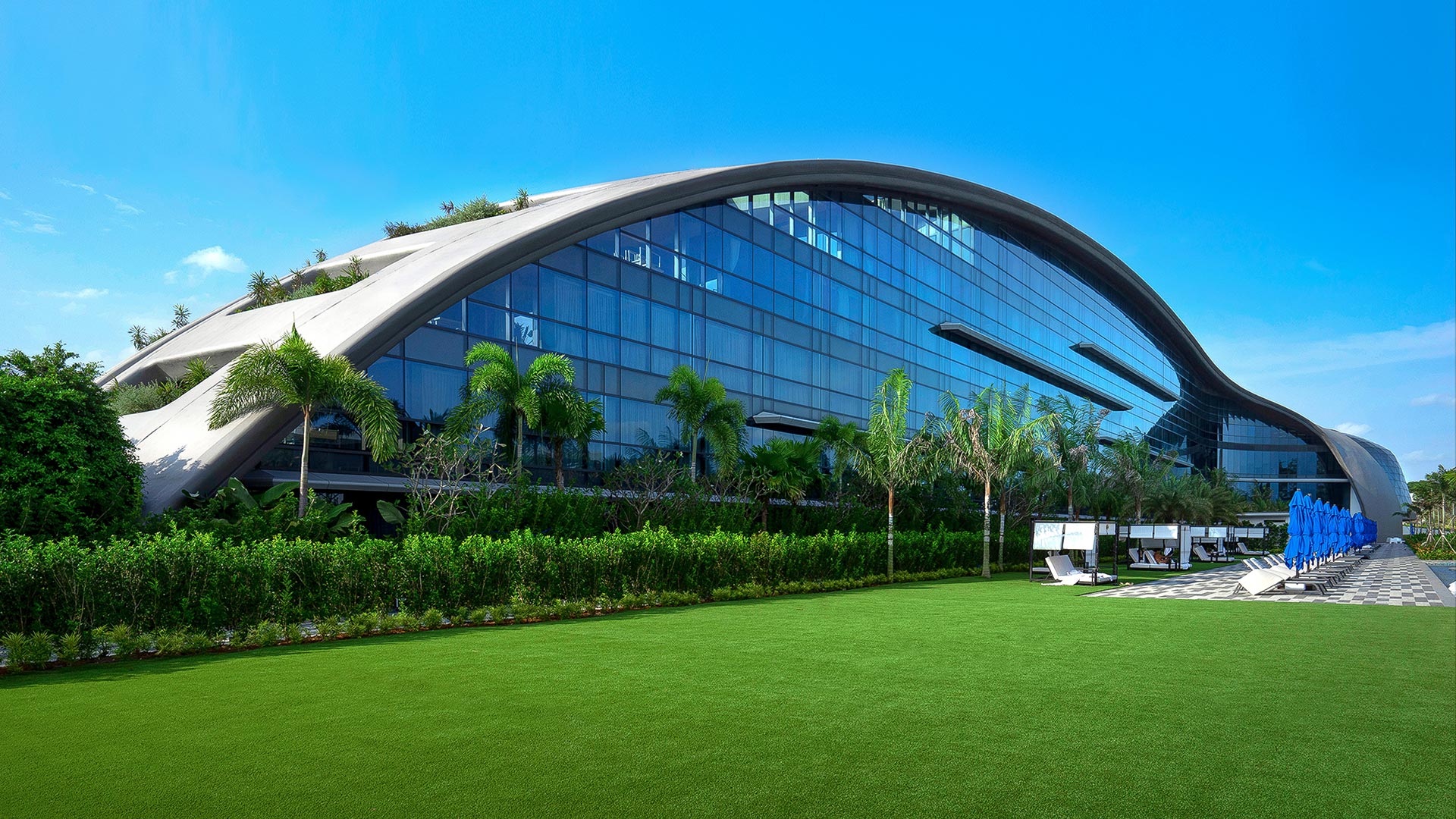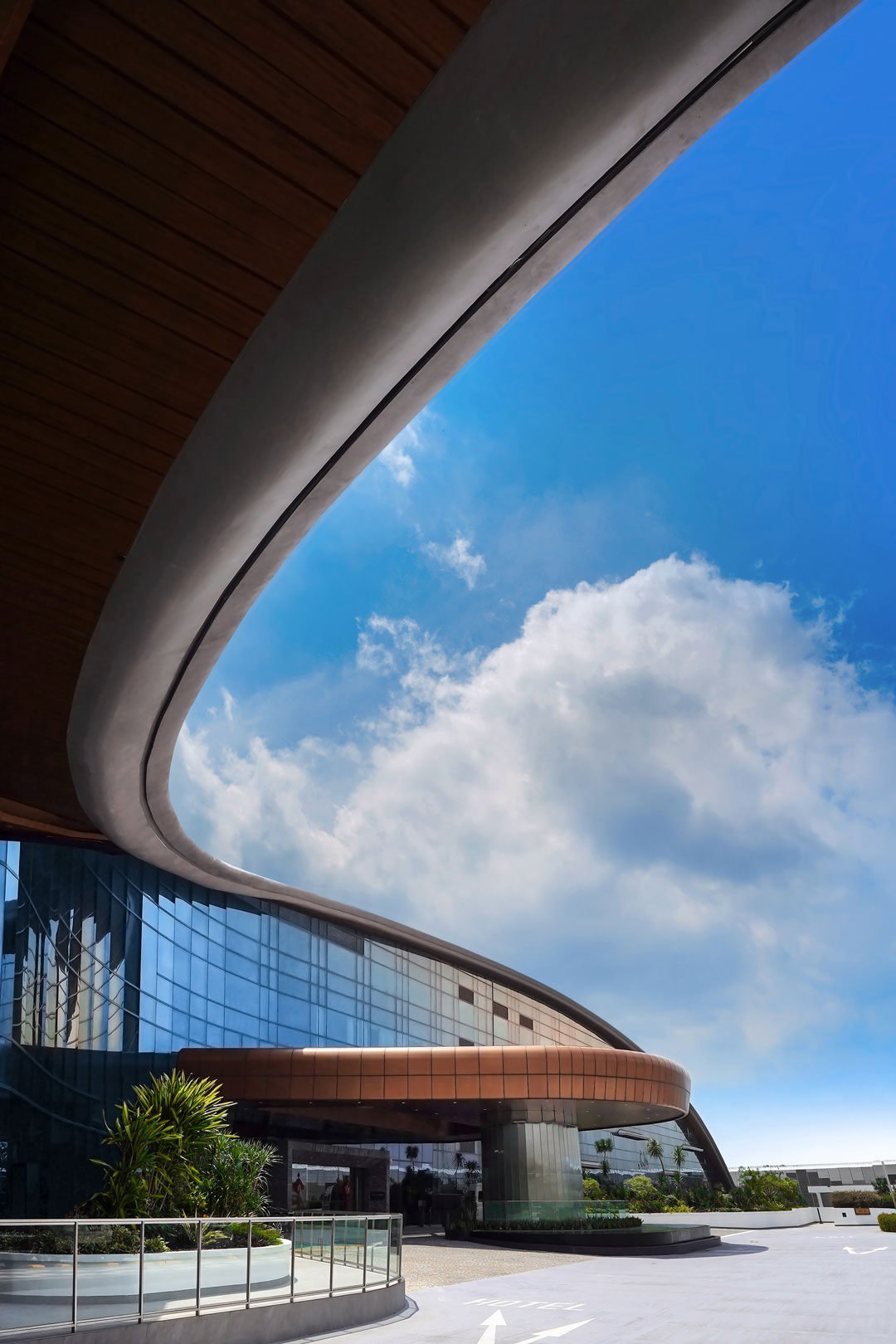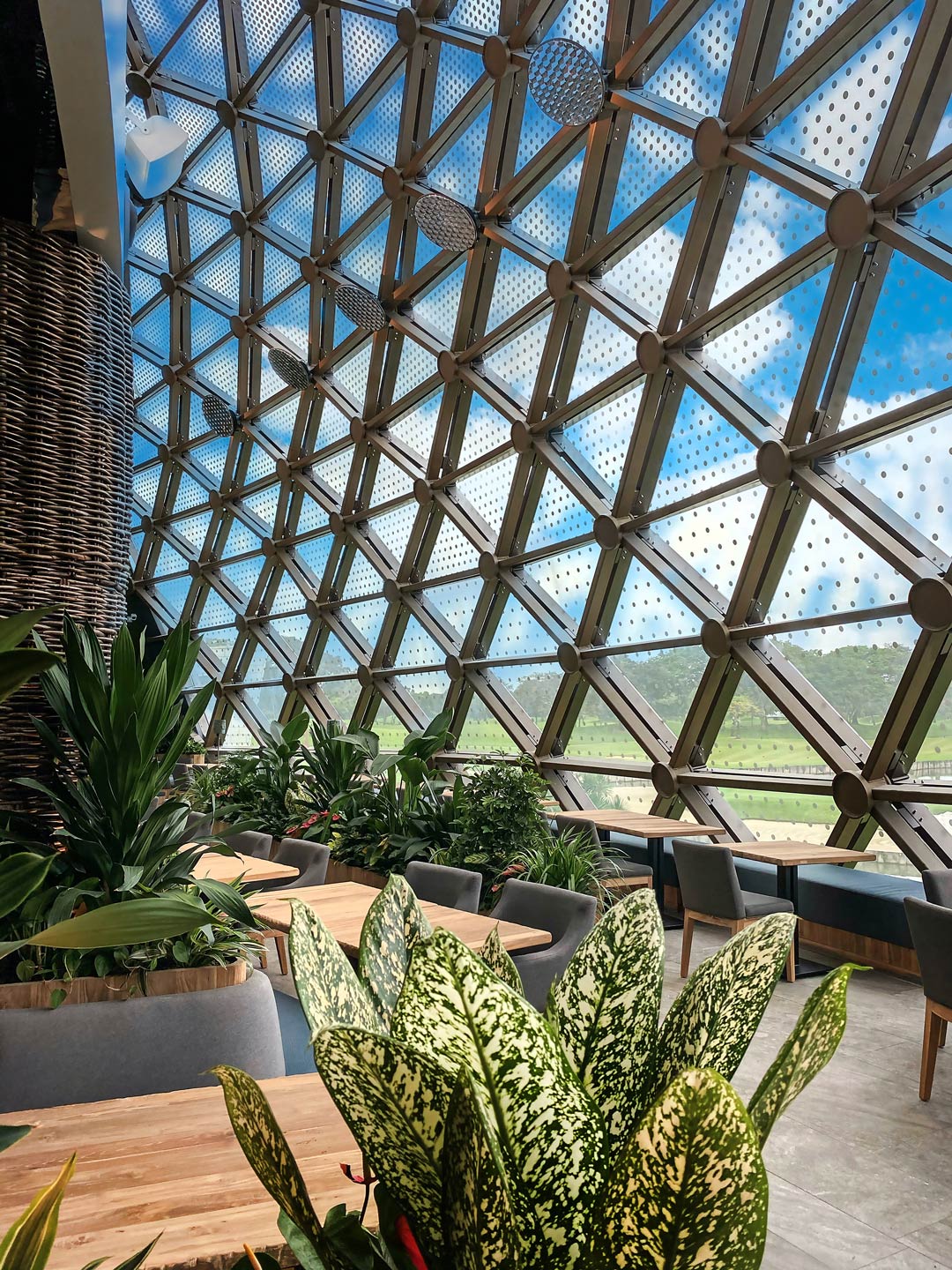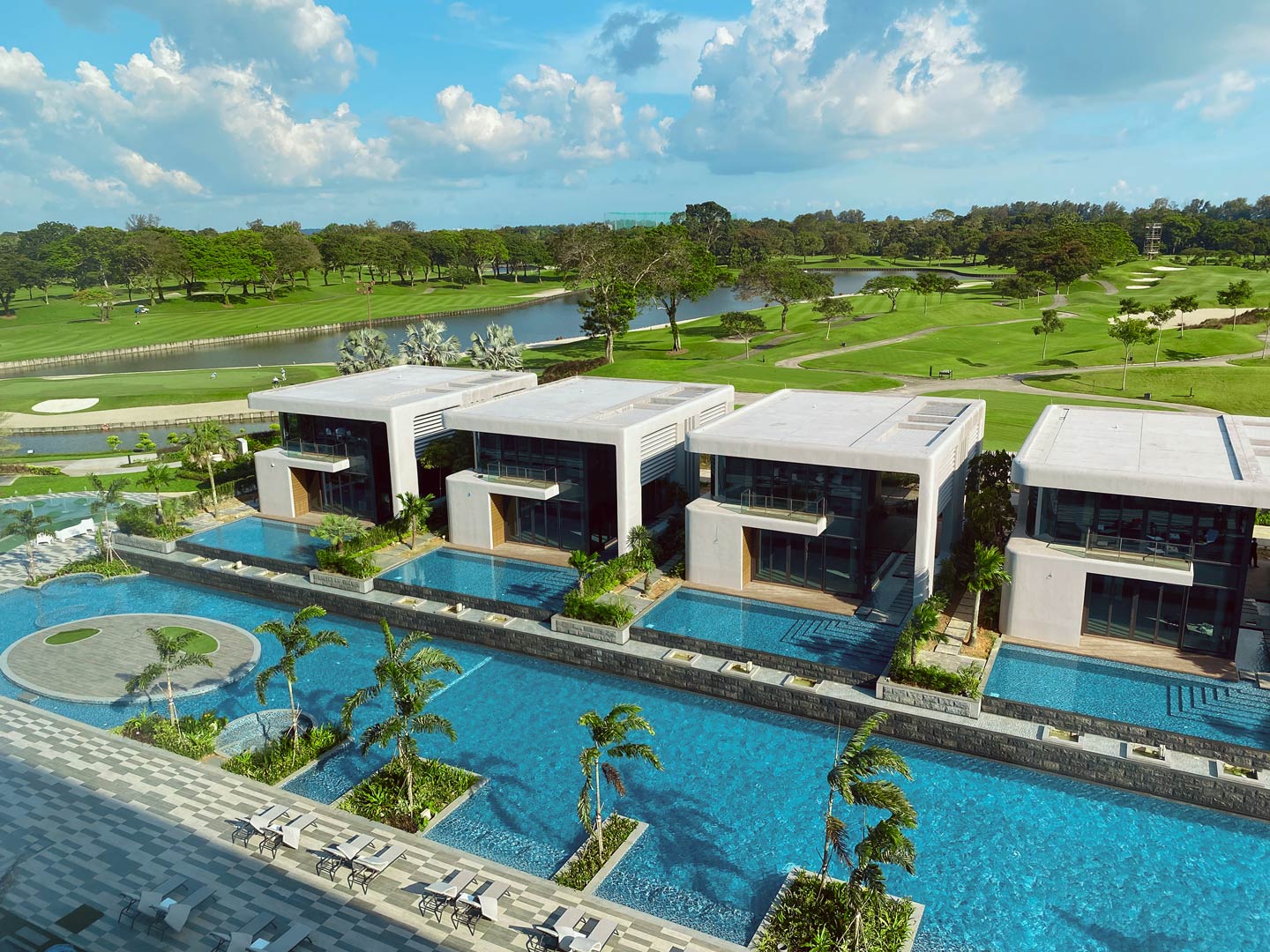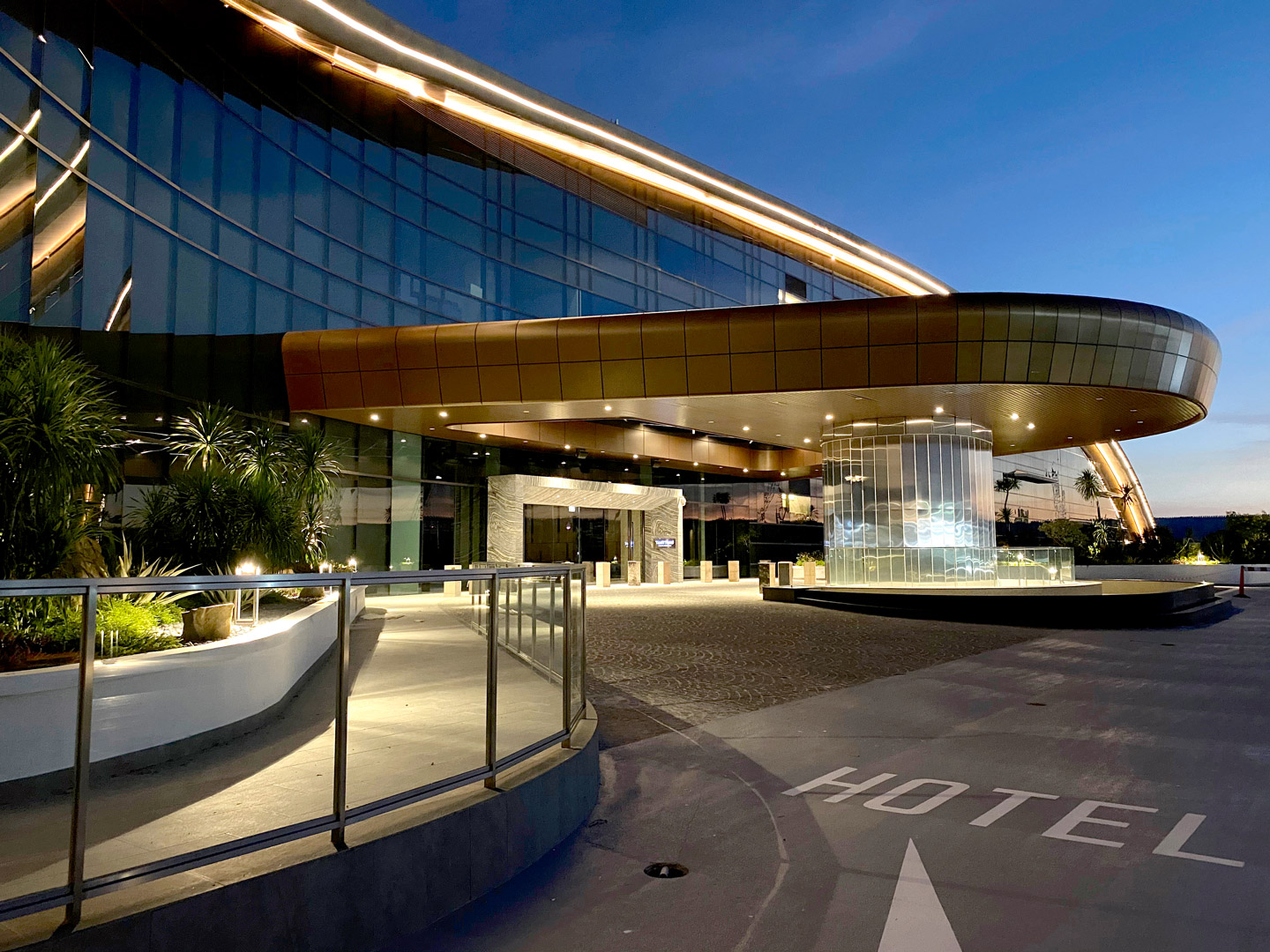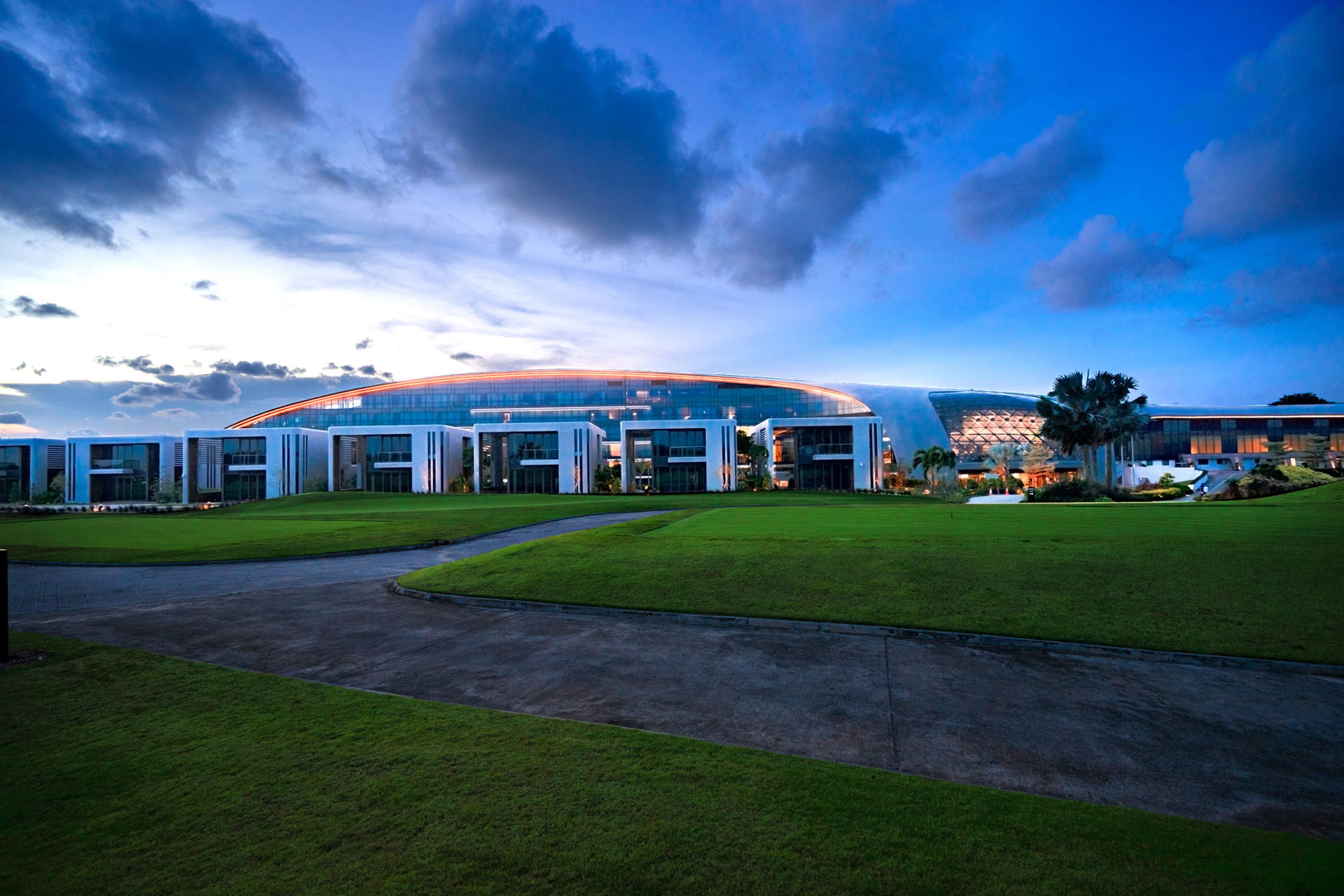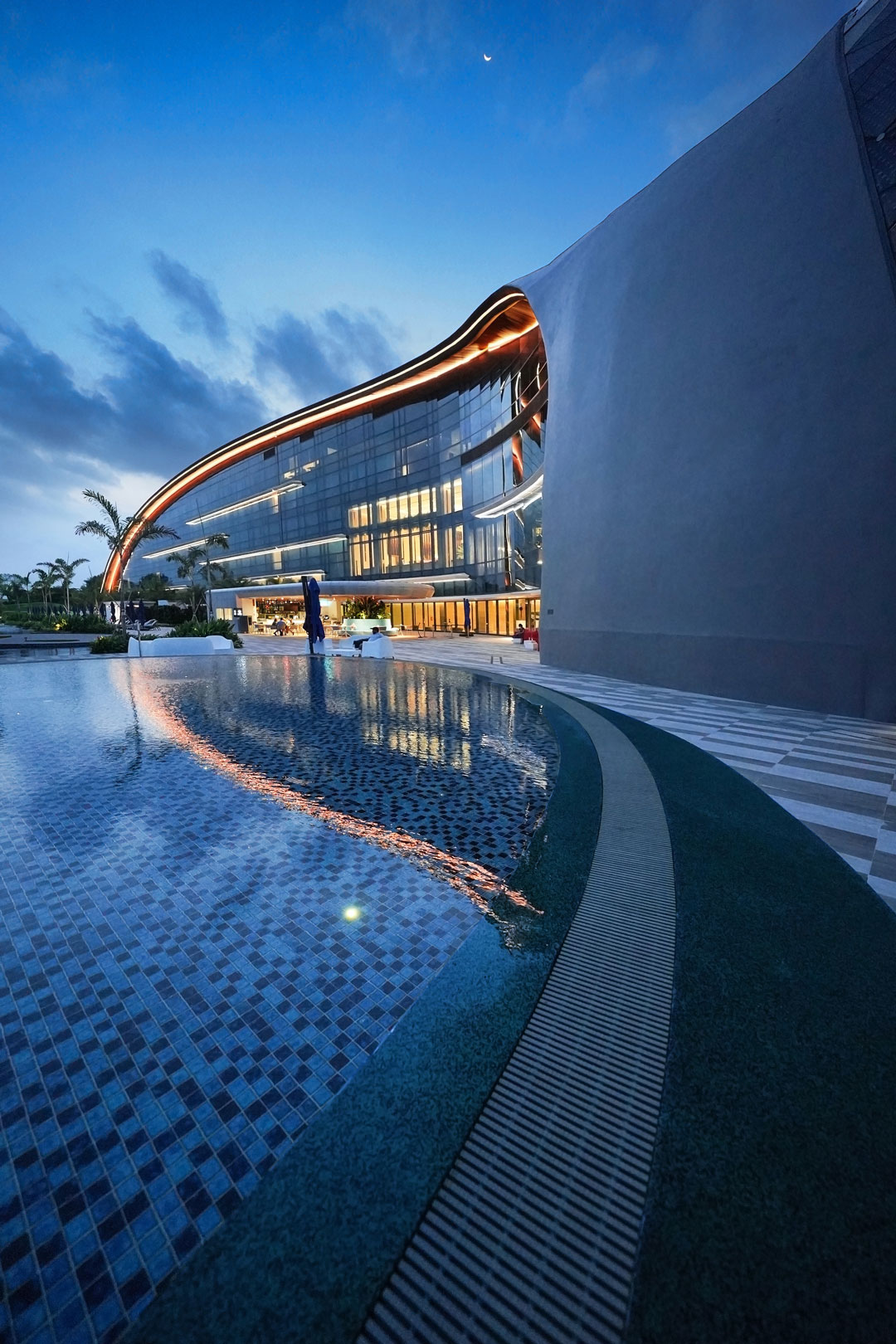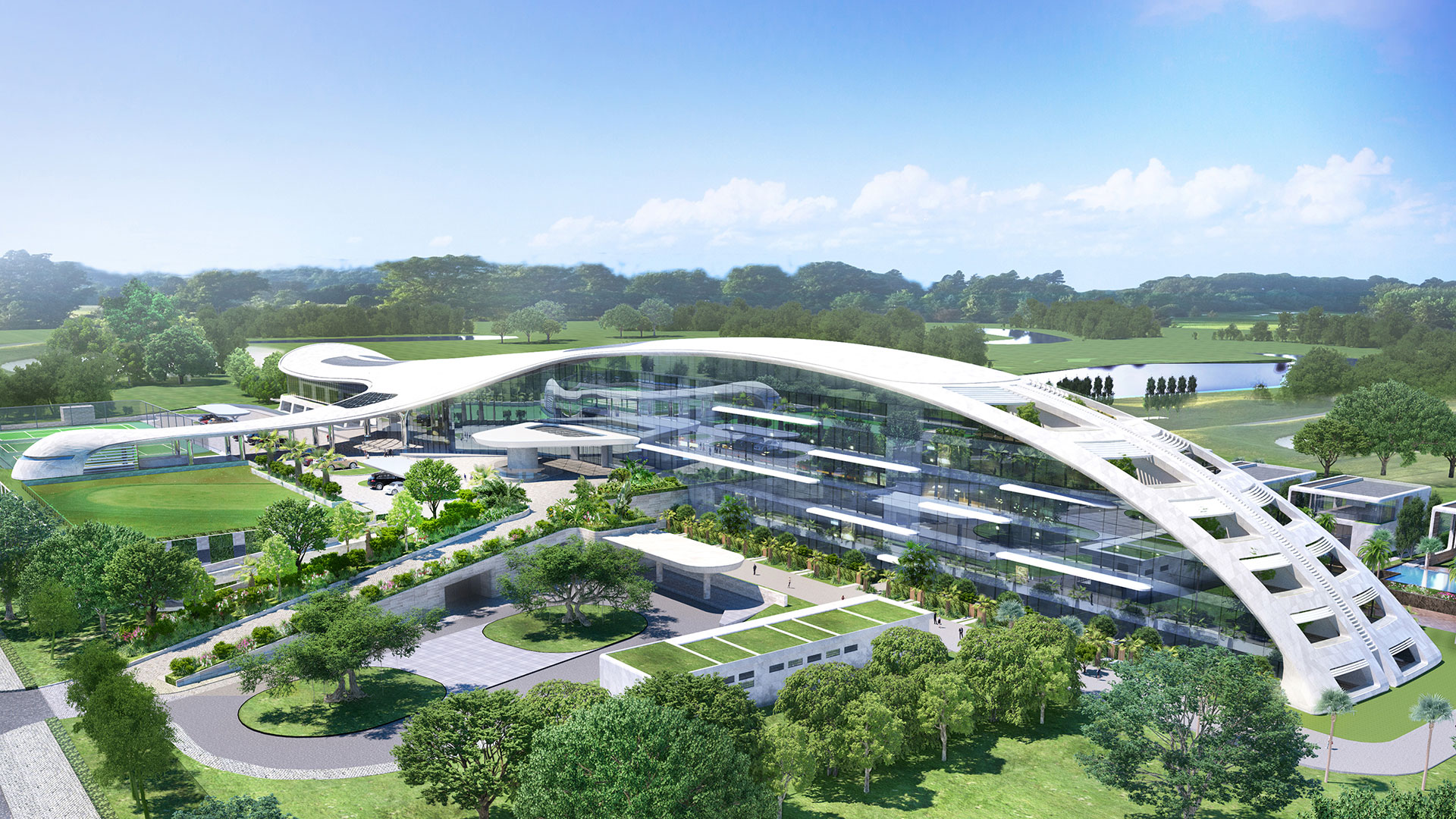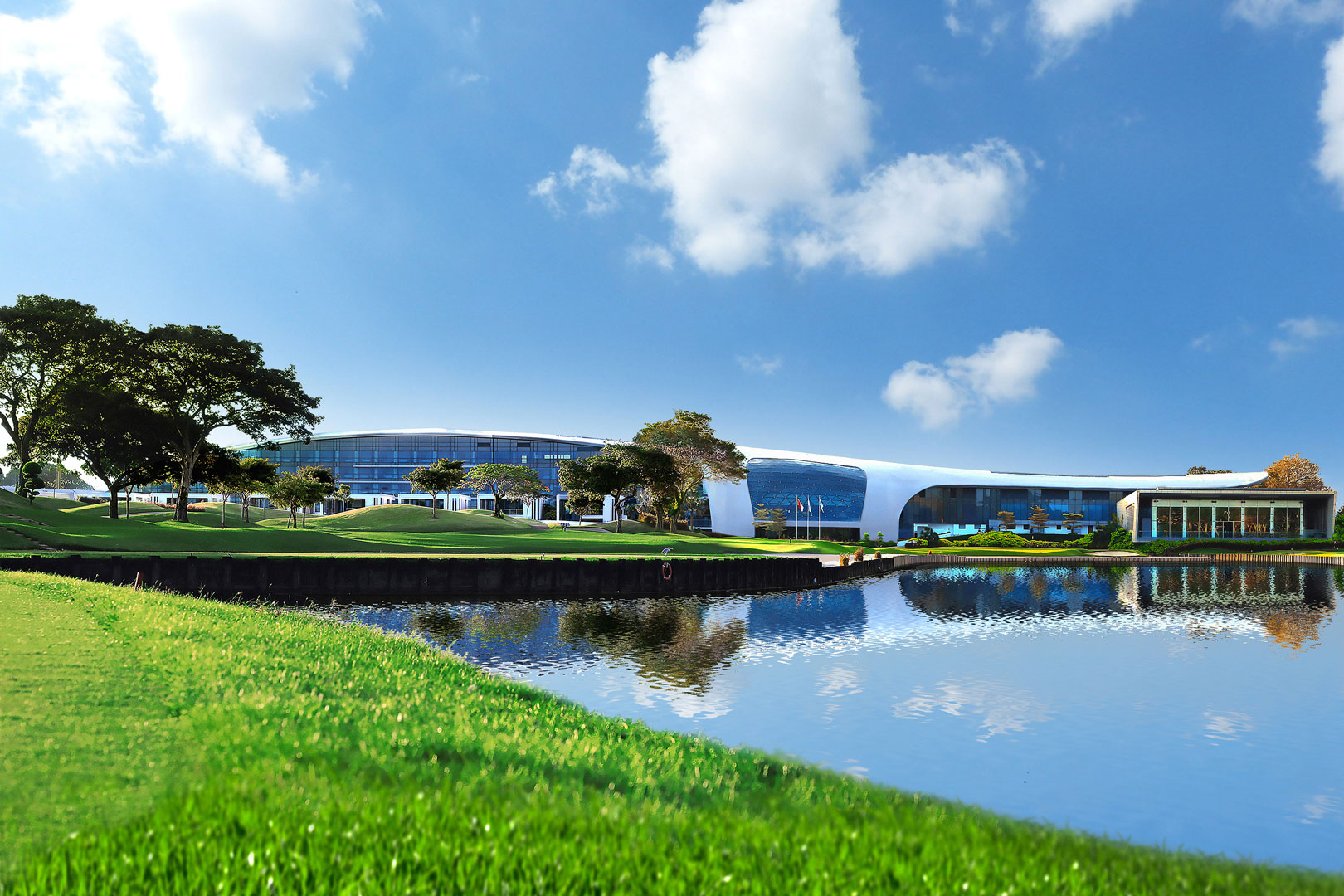DUSIT THANI LAGUNA SINGAPORE
Singapore
The design narrative of Dusit Thani Laguna starts with a singular, evocative concept: a simple, curving line that ascends at one end and descends at the other. This idea, translated into architecture by MDL, is a remarkable achievement—an expression of both precision and elegance seldom realised through a solitary pencil stroke. Laguna’s original sketch symbolises the gentle undulations of its adjacent golf course, establishing a harmonious connection between the built environment and the landscape upon which the resort is situated.
Spanning 1,168,652.50 square metres, the project initially involved the renovation of an existing clubhouse and the addition of a new hotel. The client’s brief sought to minimise demolition by retaining the original clubhouse—a traditional structure with a pitched roof—whilst undertaking a contemporary refurbishment, primarily addressing cosmetic updates.
However, the unexpected announcement of a new MRT line by the Singaporean government necessitated the relocation of approximately one-third of the building. This development offered a valuable opportunity to reimagine the design, free from the constraints of the existing structure. Consequently, MDL’s architects were tasked with creating a bolder design solution, unconstrained by the limitations of the previous plan.
The integration of new and existing facilities resulted in the creation of a sleek, sweeping roof that serves as a unifying architectural element, seamlessly merging the hotel and clubhouse functions into a single, coherent form. This bold yet graceful gesture mirrors the undulating terrain of the golf course, establishing a strong dialogue between the building and its surroundings. The refurbished clubhouse retains its original functions, such as golf cart storage, locker rooms, and starting points for golf tours, while now being combined under the overarching roof alongside the hotel. A continuous glazed façade accentuates this unity, ensuring that both components of the resort are perceived as part of an integrated whole.
MDL sought to forge a direct connection between the architecture and the undulating topography of the golf course. Drawing inspiration from the slopes and curves of the course, Massimo Mercurio conceived a fluid form that emerges from the course’s landscape itself. The building rises organically from the ground, creating a shelter for the six-storey hotel while extending to cover the three-storey clubhouse. The roof splays out in the centre to form an entry canopy on one side and a framing element for the all-day dining room and banquet hall on the other.
The unifying roof conceals the height disparity between the two structures whilst also aligning with the natural contours of the resort’s topography. The dynamic form of the building blends seamlessly with its environment, presenting a cohesive and visually harmonious composition. The approach reflects MDL’s architectural philosophy, with the exterior form mirrored in the interior spaces, which emphasise the building’s curvilinear character. As Massimo Mercurio states, “the roof makes the architecture of the building… It doesn’t just enclose the building; it also becomes the body.”
The dual functions of the hotel and clubhouse presented a complex design challenge, one that was resolved through a central circular volume that links both sections of the project. This central space, accessed via a ramp that also functions as a canopy for the pre-existing car park, acts as a pivotal core from which the hotel and clubhouse extend as two wings. The golf club lobby occupies this central volume, with the hotel reception situated to its right, adjacent to the lift lobby. A first drop-off point, beneath a skylight, leads directly to the hotel, with the golf club positioned beyond. A void above the second-floor entry level separates the hotel from the clubhouse, establishing a clear yet subtle distinction between the two functions.
On the third floor, directly above the central entry lobby, is the banquet and ballroom space—considered by Mercurio as the architectural highlight of the building. This expansive area is characterised by a free-span vaulted ceiling, an embodiment of the architects’ aspiration for the structure to “speak” through its form.
The hotel’s three additional storeys over the clubhouse are discreetly camouflaged by the unified roof, ensuring that the buildings’ height difference does not disrupt their visual harmony. The roof, as a distinctive architectural feature, brings together the diverse functions of the hotel and clubhouse into a singular, compelling design that complements the surrounding landscape.
The hotel accommodates standard rooms across the first through sixth floors, with penthouses featuring private terraces that are built into the ascending roof. Additionally, clusters of villas are positioned on the golf course side, each with an elevated pool. The original lap and leisure pools have been repositioned closer to the hotel for enhanced accessibility.
The golf club’s facilities are distributed across three levels: the first floor houses a buggy charging area, lockers, and a gym; the mezzanine level is dedicated to administrative functions; and the second floor contains additional locker rooms and changing areas.
Traditionally known as “the 19th hole,” the clubhouse had long served as a space for golfers to relax after a round of golf. This was, however, a function that was somewhat detached from the course itself and the game. Dusit Thani Laguna represents a more novel paradigm—one that mixes these varied functions, creating a unified space where the course and its facilities exist in harmony.
LOCATION
Singapore
CLIENT
Laguna Hotel Holdings Pte Ltd
TYPE
Commercial / Hospitality
SIZE
32,000 sqm
YEAR OF COMPLETION
2020
